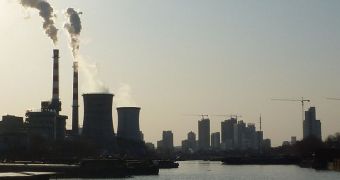According to a new report released by experts with the United Nations World Meteorological Organization (WMO) today, November 14, it would seem that this year is on track towards becoming one of the hottest on record. The conclusion was based on data spanning back all the way to 1850.
The document reveals that the record-high sea levels measured this year were produced by melting ice caps and glaciers from all over the world. This mass melting was in turn produced by higher temperatures in the atmosphere and Earth's oceans.
According to the WMO team, the first nine months of 2013 registered global temperatures and sea levels nearly identical to the ones recorded over the same period in 2003 – which was the seventh-warmest year on record. Combined land and surface temperatures were 0.48 degrees Celsius (0.86°F) higher than the 1961-1990 average.
But higher temperatures are not the only indicators of a changing climate, the report argues. Other factors, including floods, tropical storms, droughts and extreme precipitations, have already manifested themselves plentifully this year.
The WMO's Status of the Global Climate 2013 report also shows that sea levels are currently increasing at a rate of around 3.2 millimeters per year, which is twice the value recorded throughout the entire 20th century. These values are also higher than the 2001-2010 average of 3 millimeters per year.
“Temperatures so far this year are about the same as the average during 2001-2010, which was the warmest decade on record. All of the warmest years have been since 1998 and this year once again continues the underlying, long-term trend,” says Michel Jarraud, the Secretary-General at WMO.
“Atmospheric concentrations of carbon dioxide and other greenhouse gases reached new highs in 2012, and we expect them to reach unprecedented levels yet again in 2013. This means that we are committed to a warmer future,” the UN official adds.
Jarraud says that typhoons such as Haiyan cannot be directly linked to global warming, but adds that global warming does tend to make populations living in coastal areas more vulnerable to natural disasters. Studies suggest that global warming will increase the frequency of intense tropical cyclones.
The WMO report was released just ahead of the COP 19 UN climate change conference, which is scheduled to begin this week in Warsaw, Poland. The purpose of the convention is for nations to develop a successor to the Kyoto Protocol, which was signed in Japan in 1997, ClickGreen reports.

 14 DAY TRIAL //
14 DAY TRIAL //